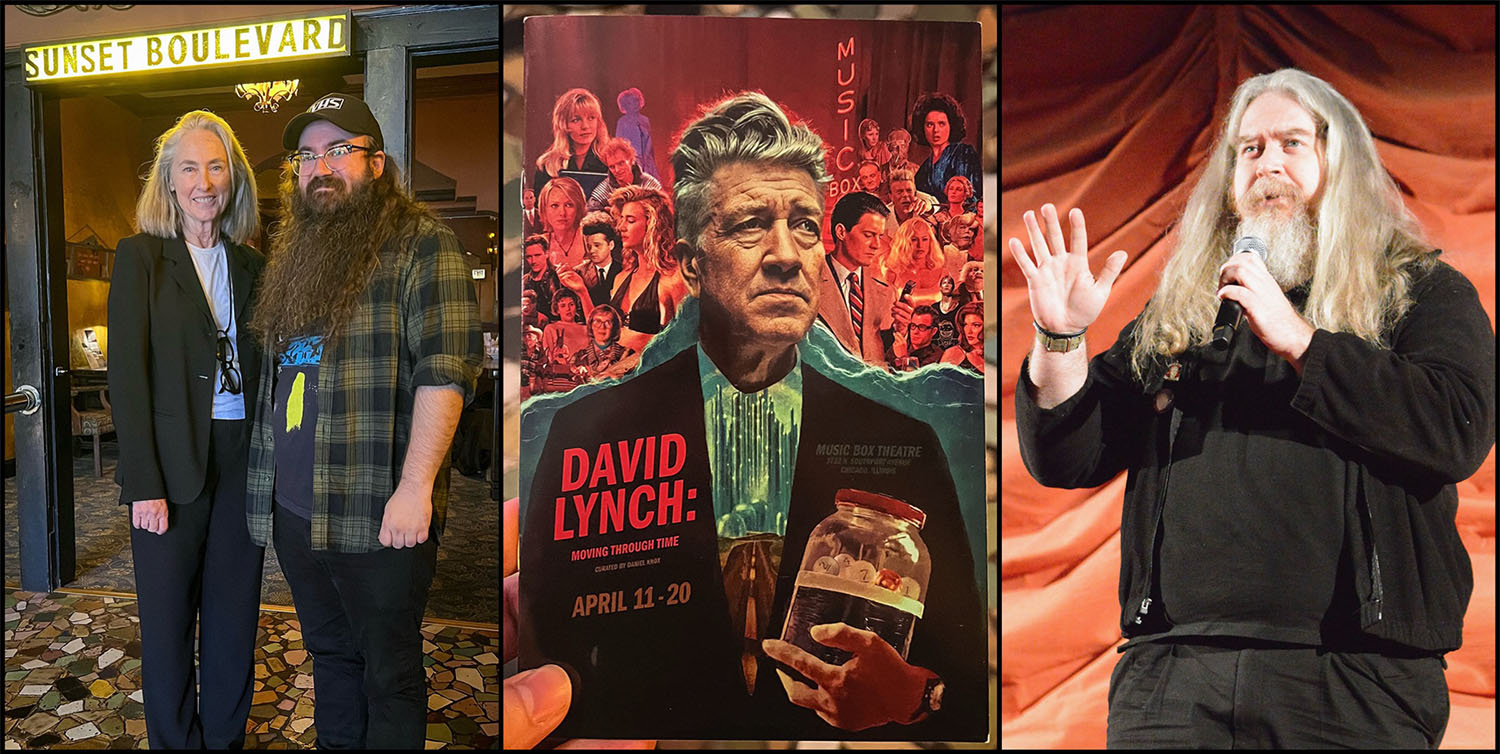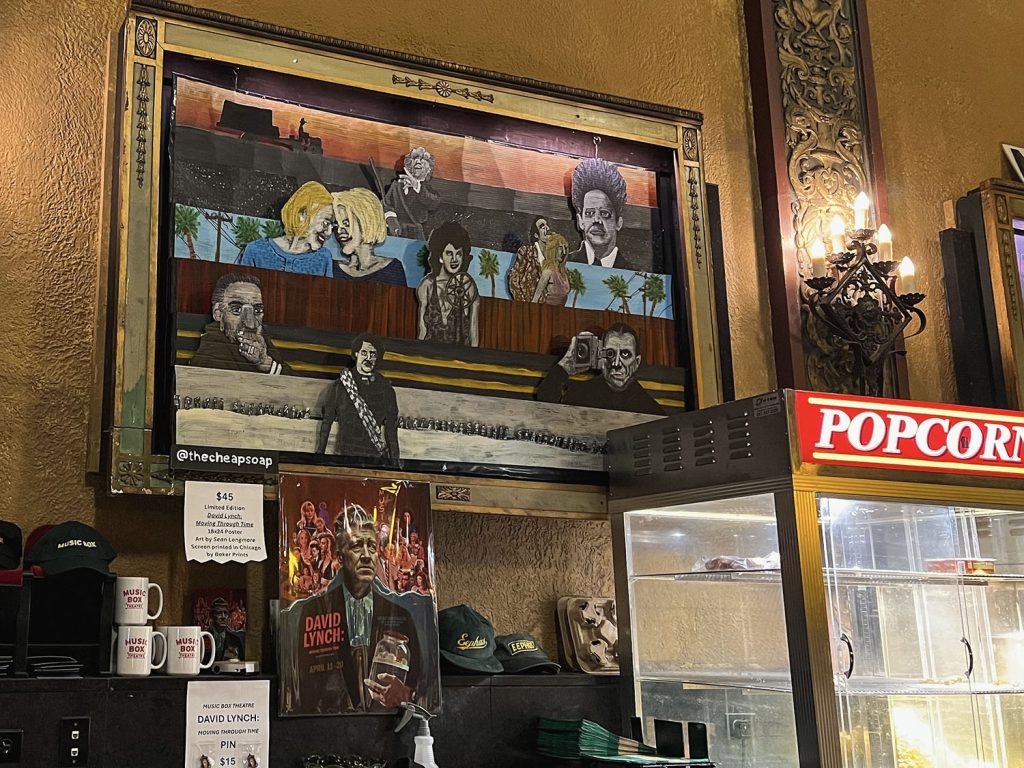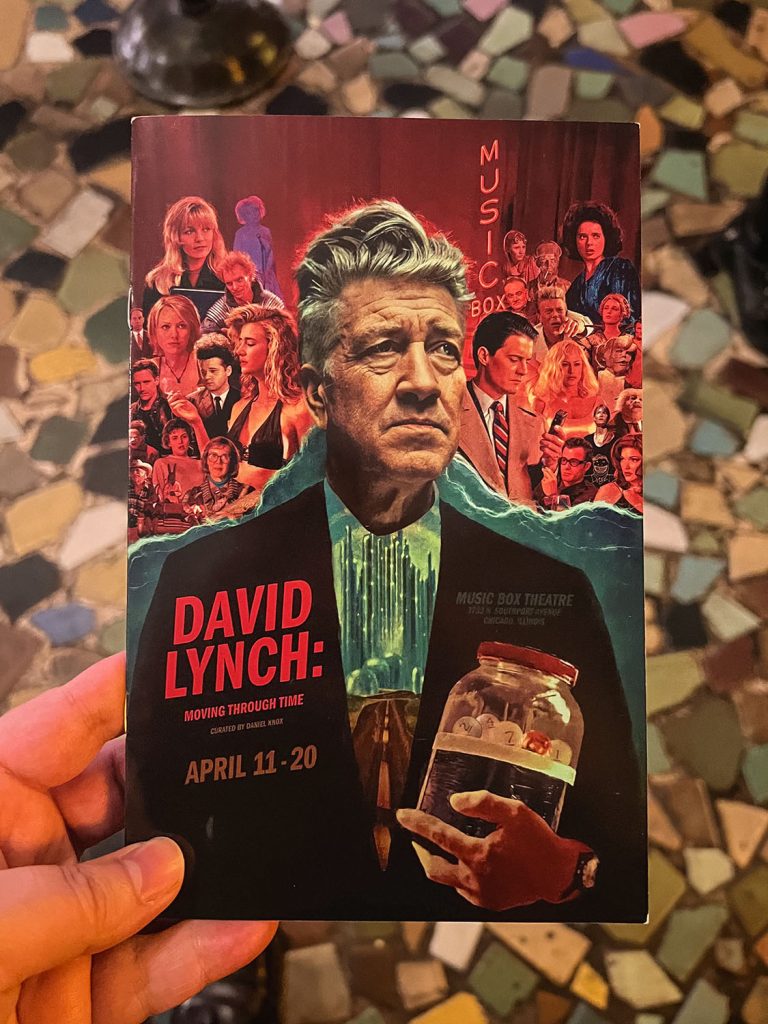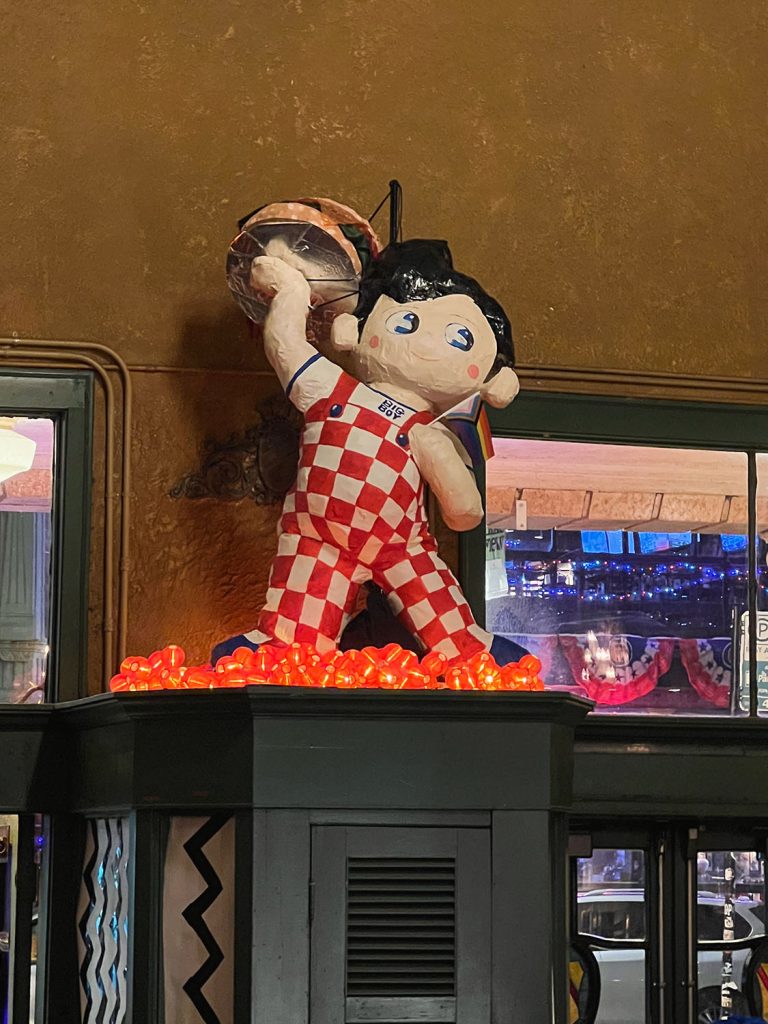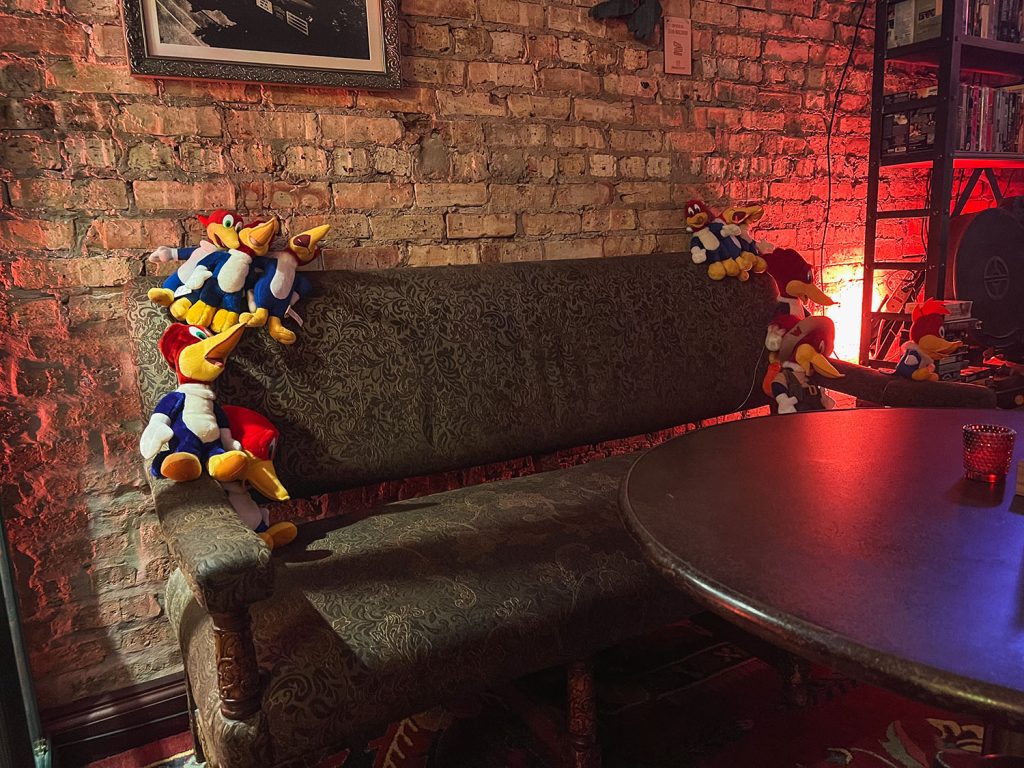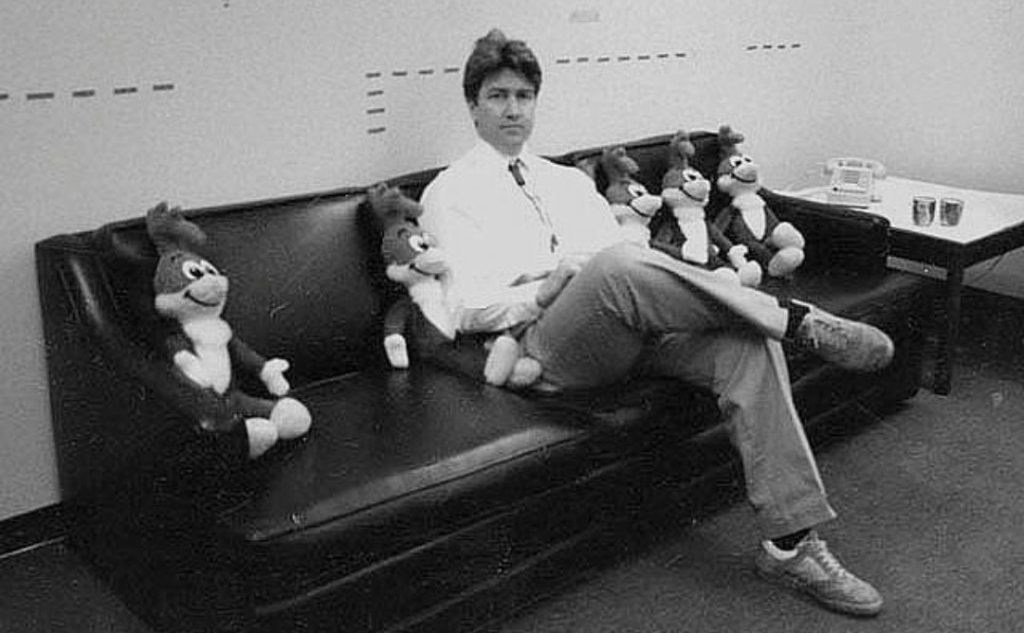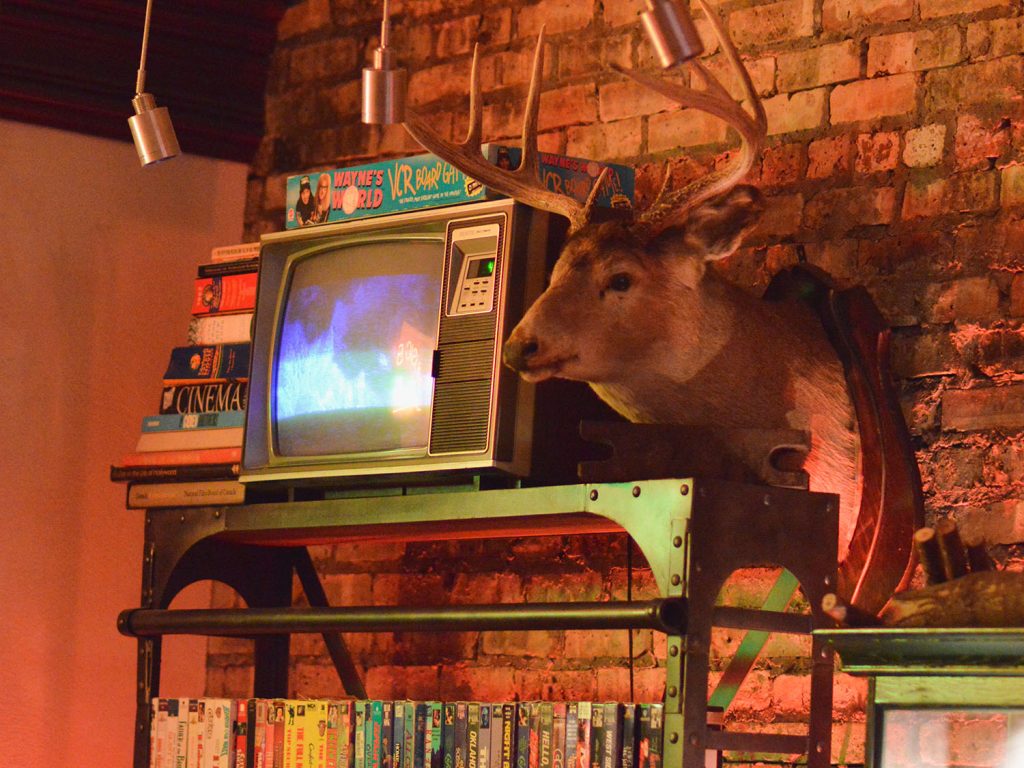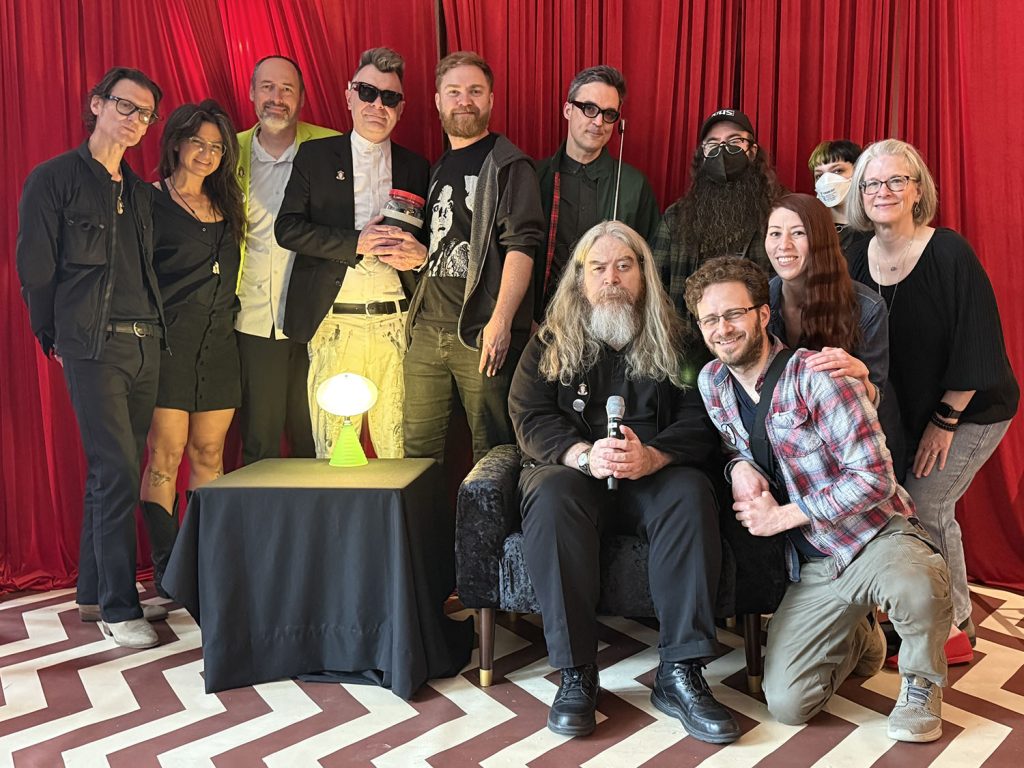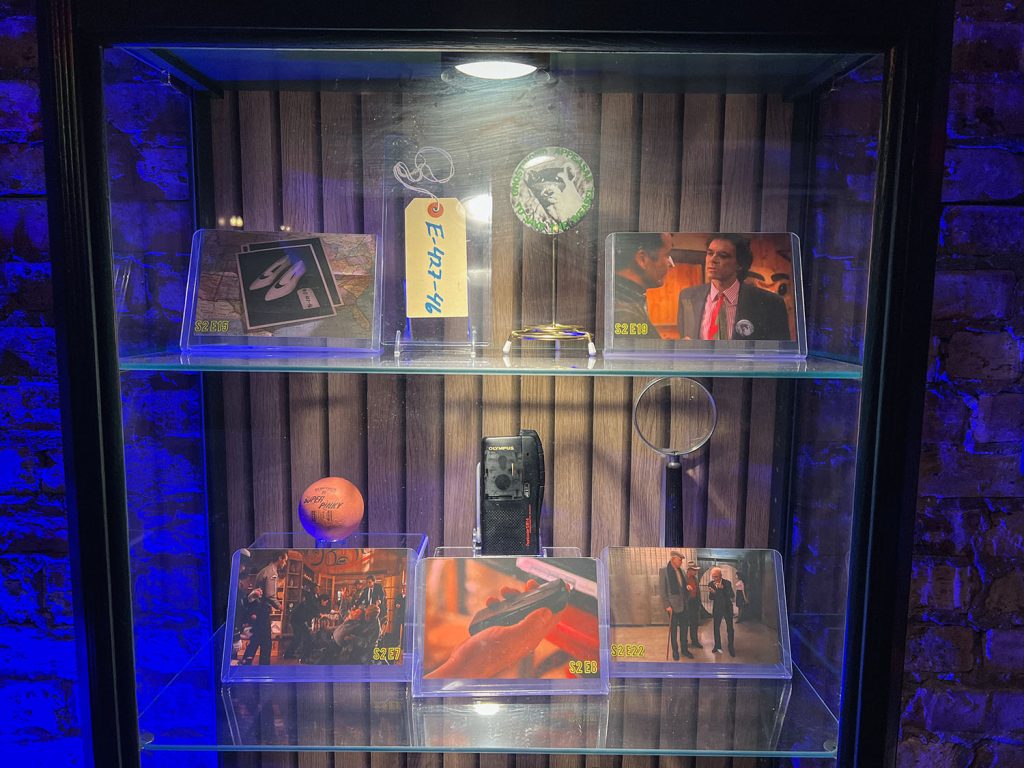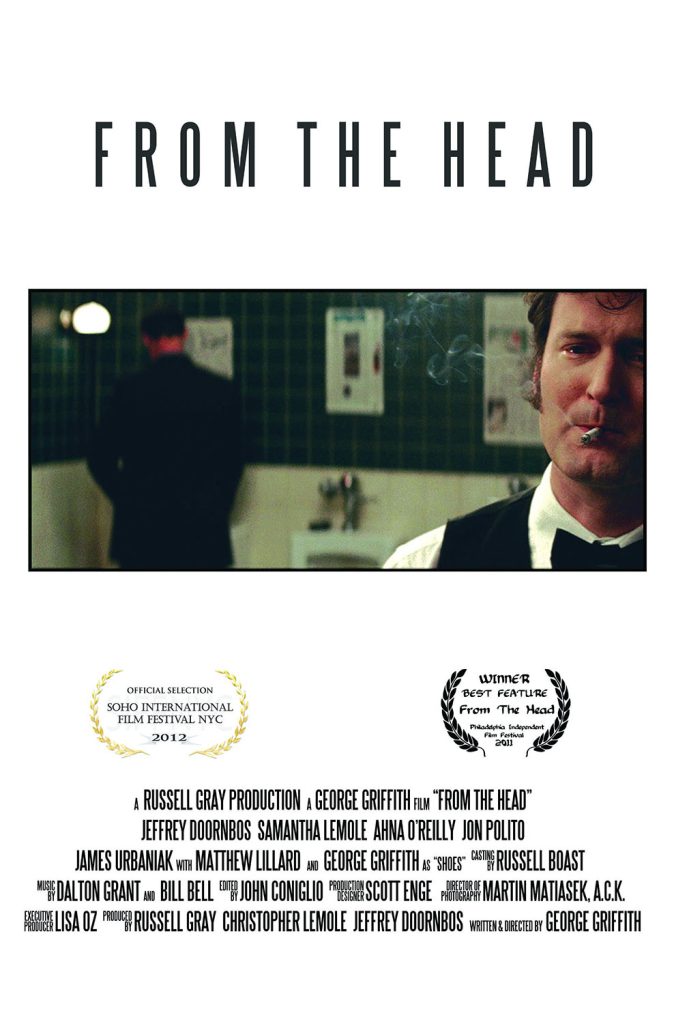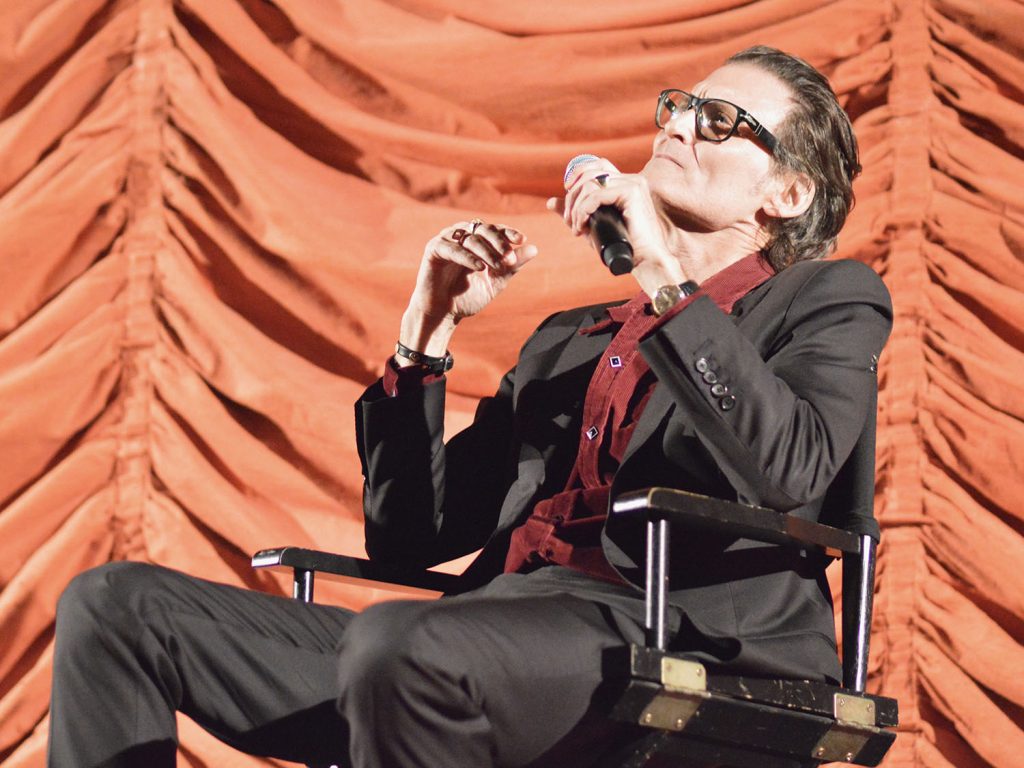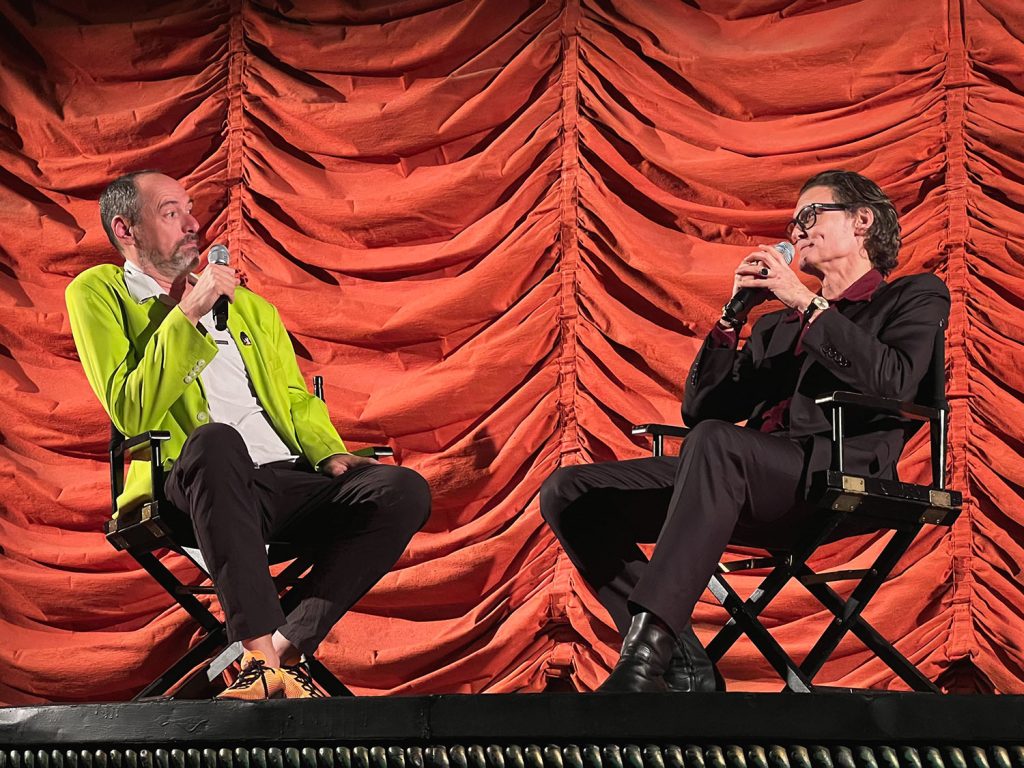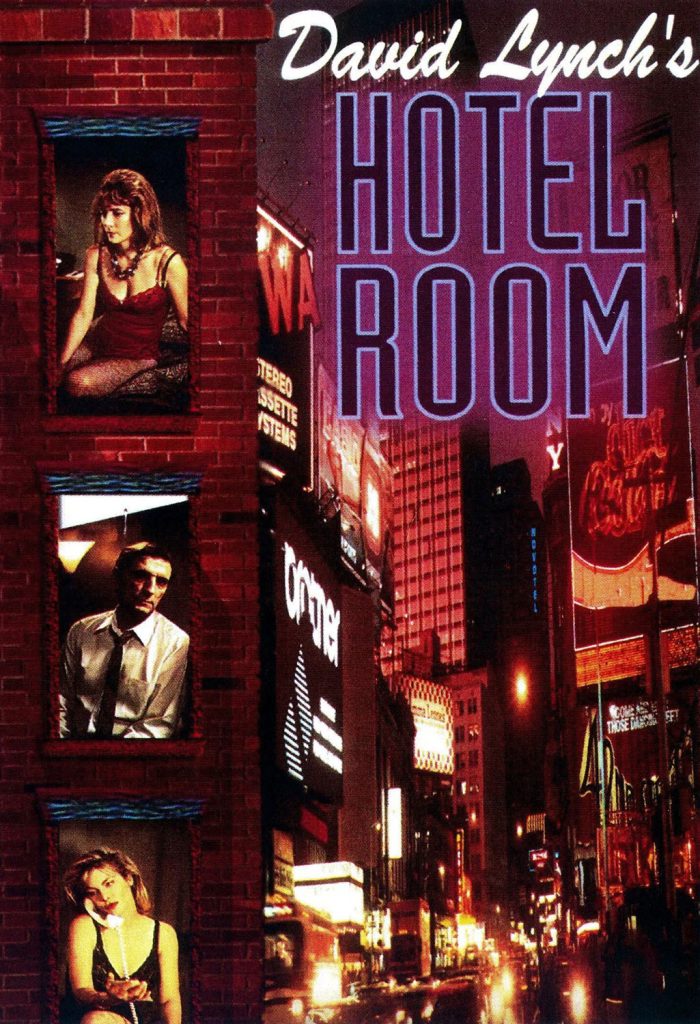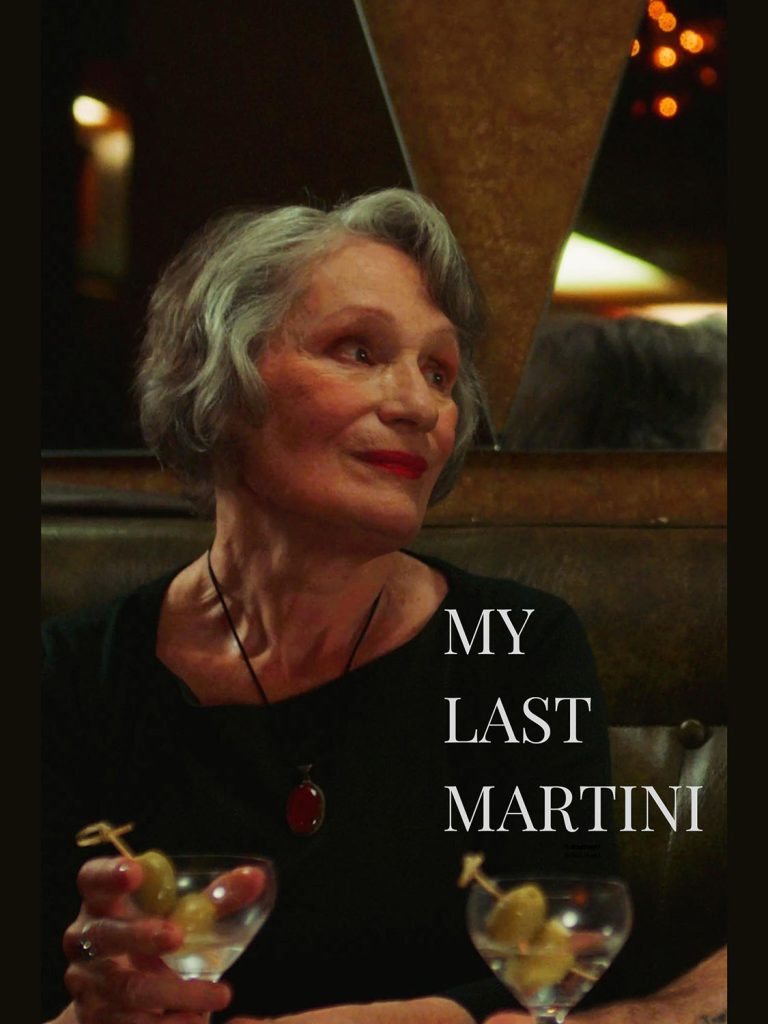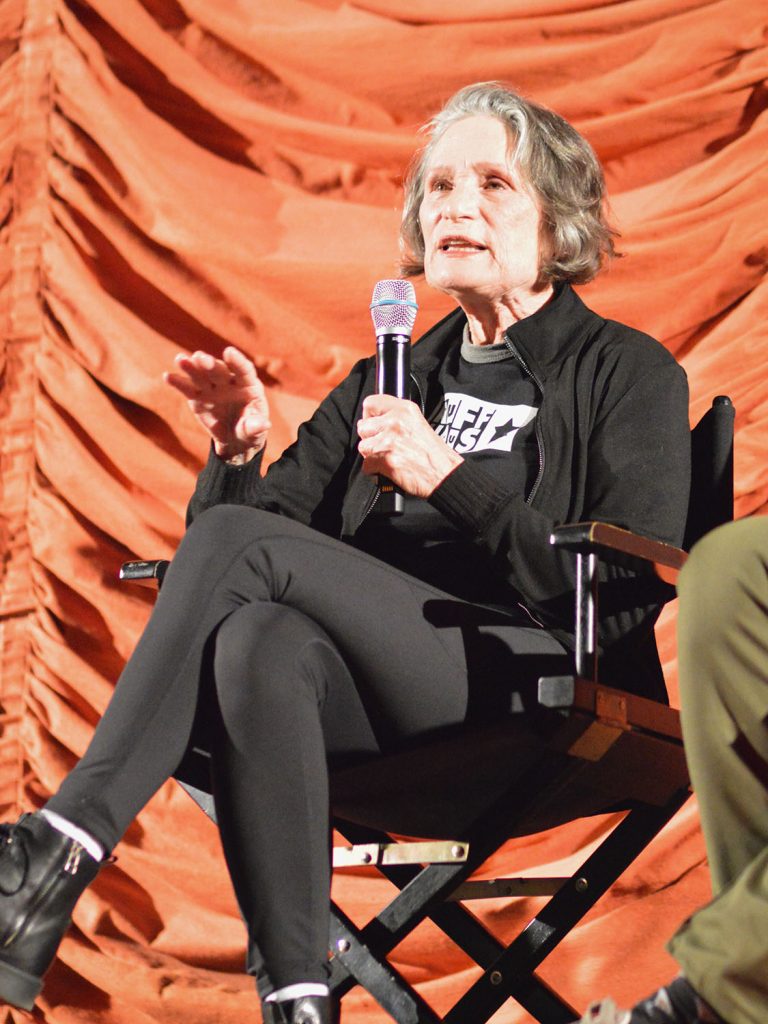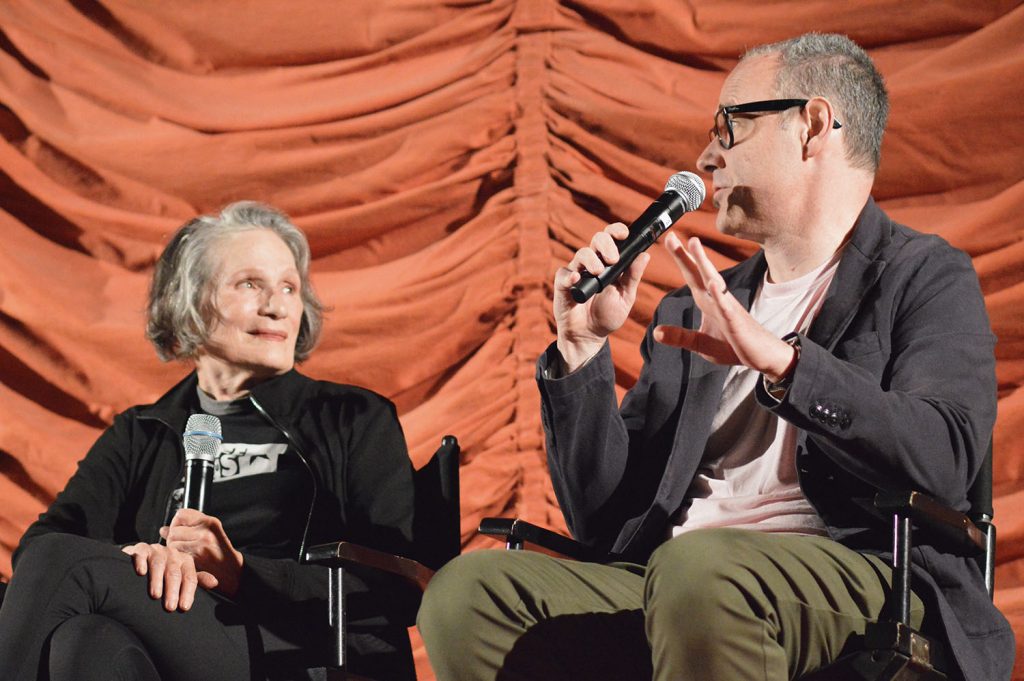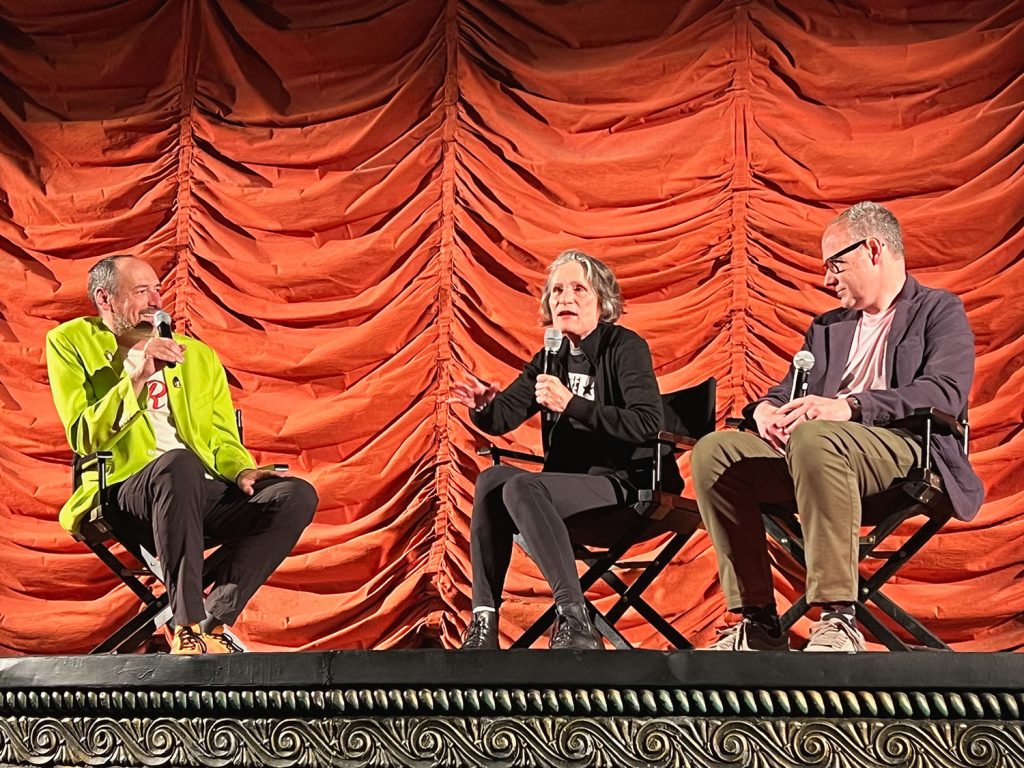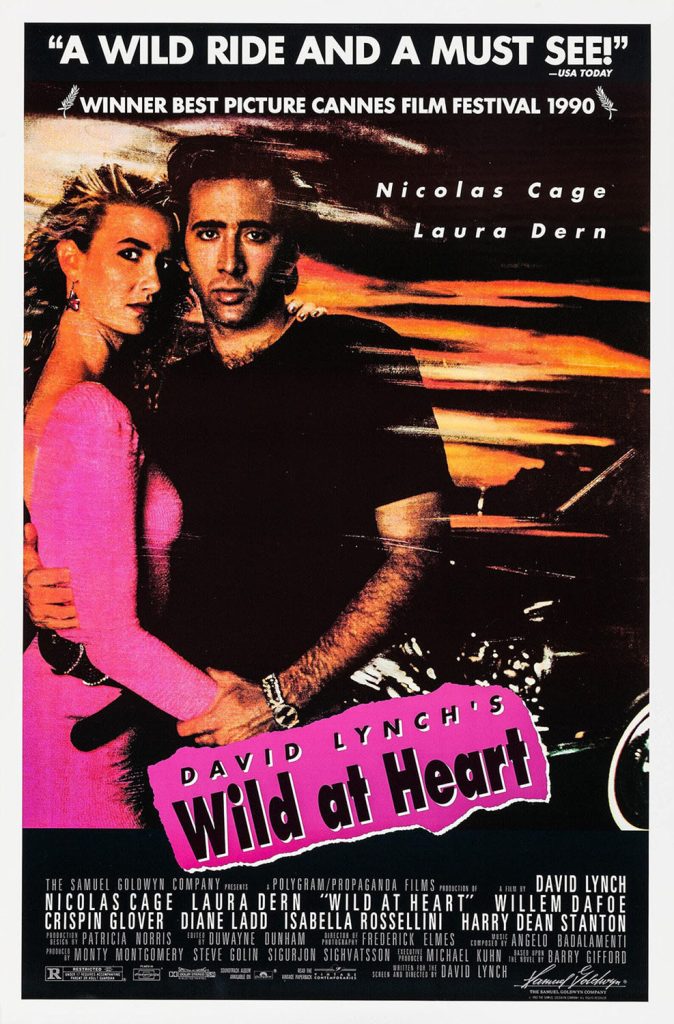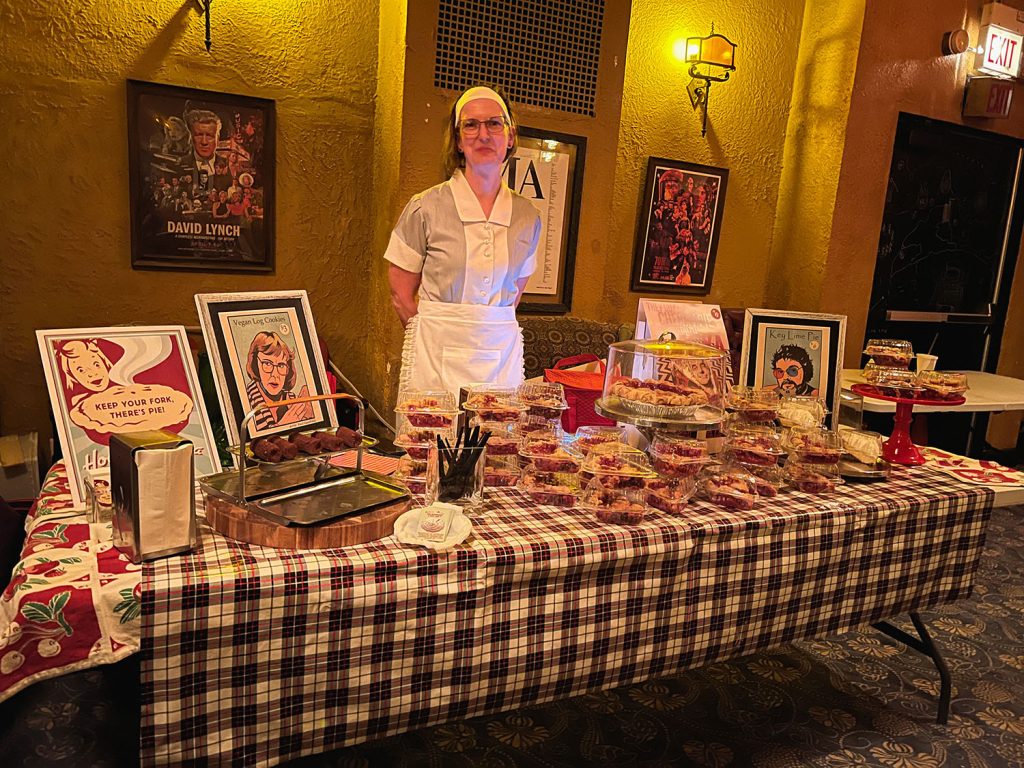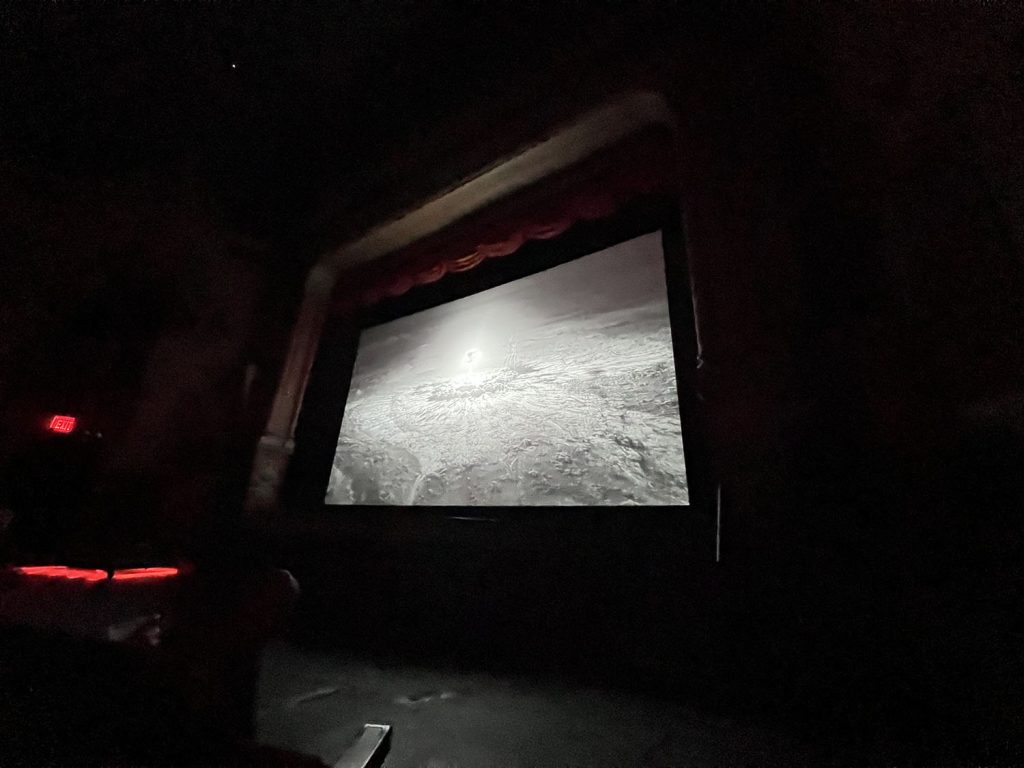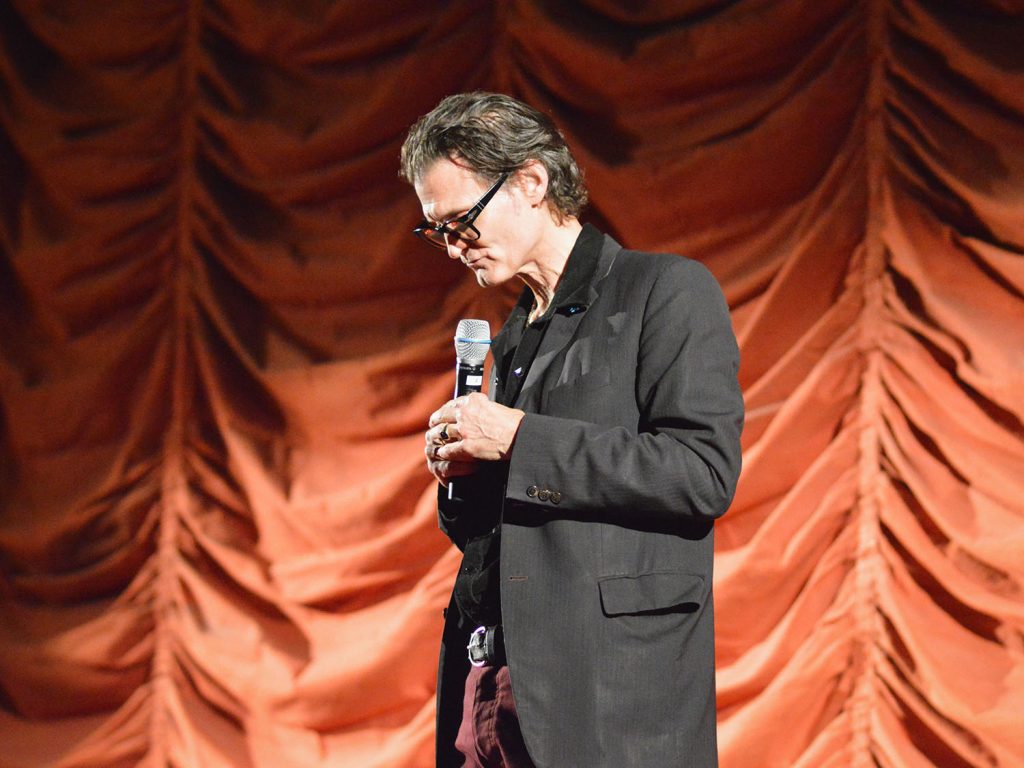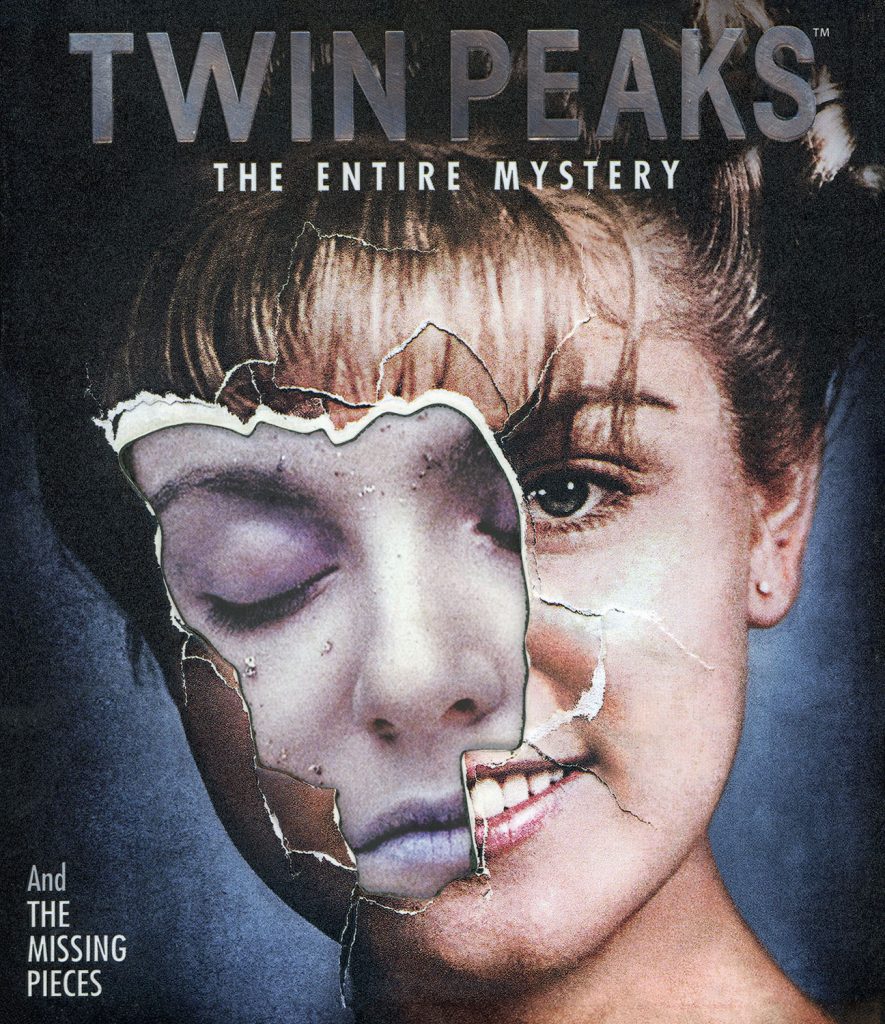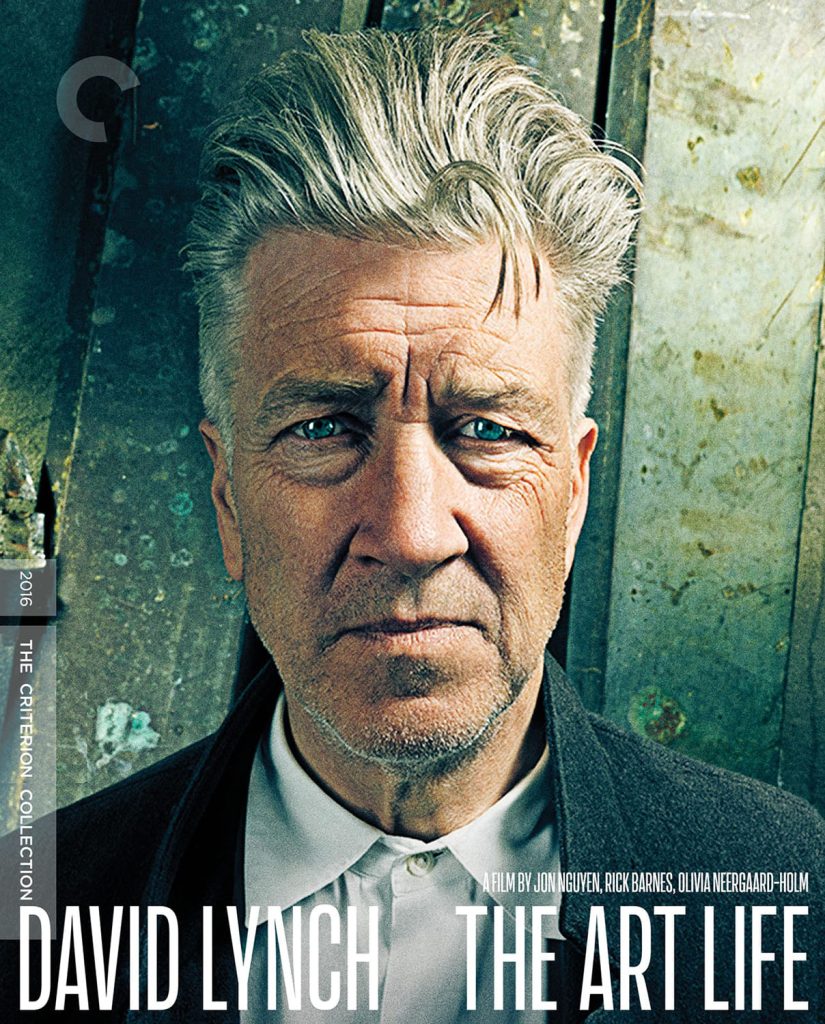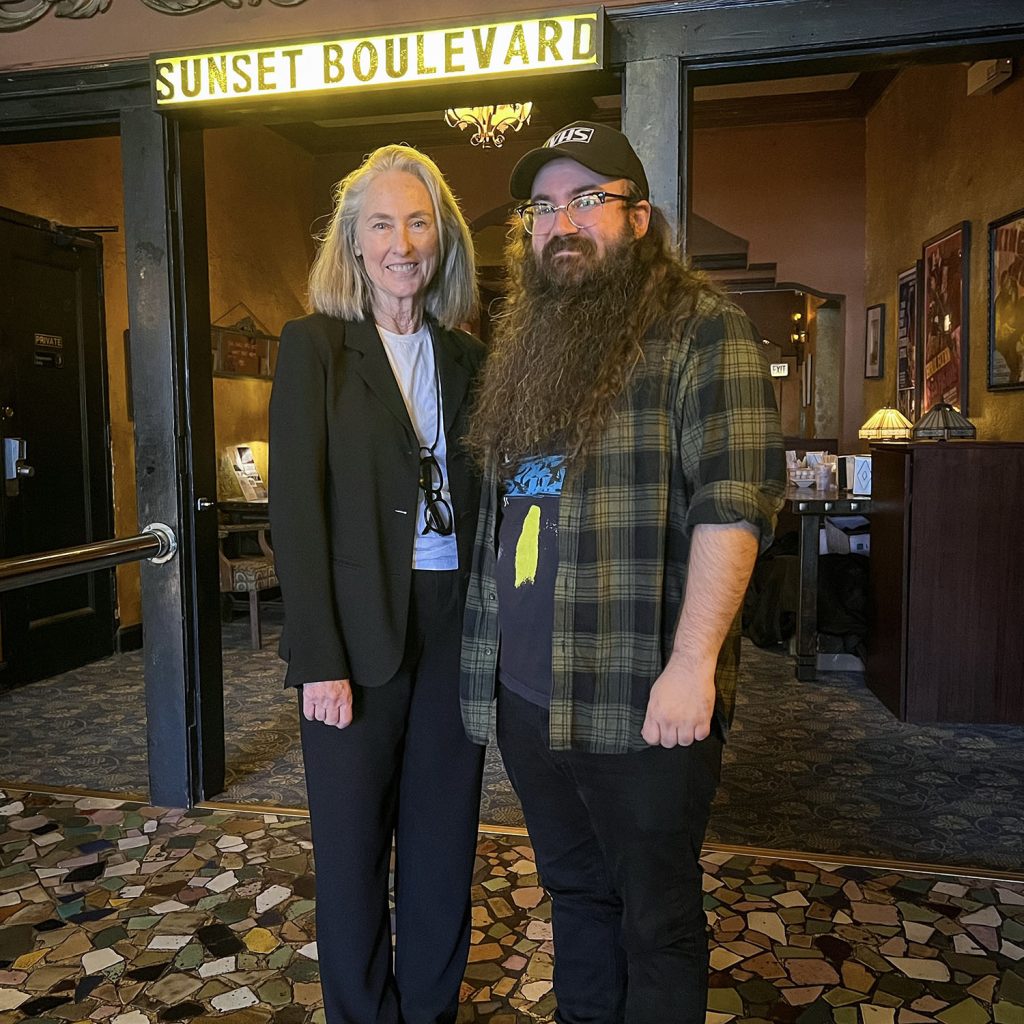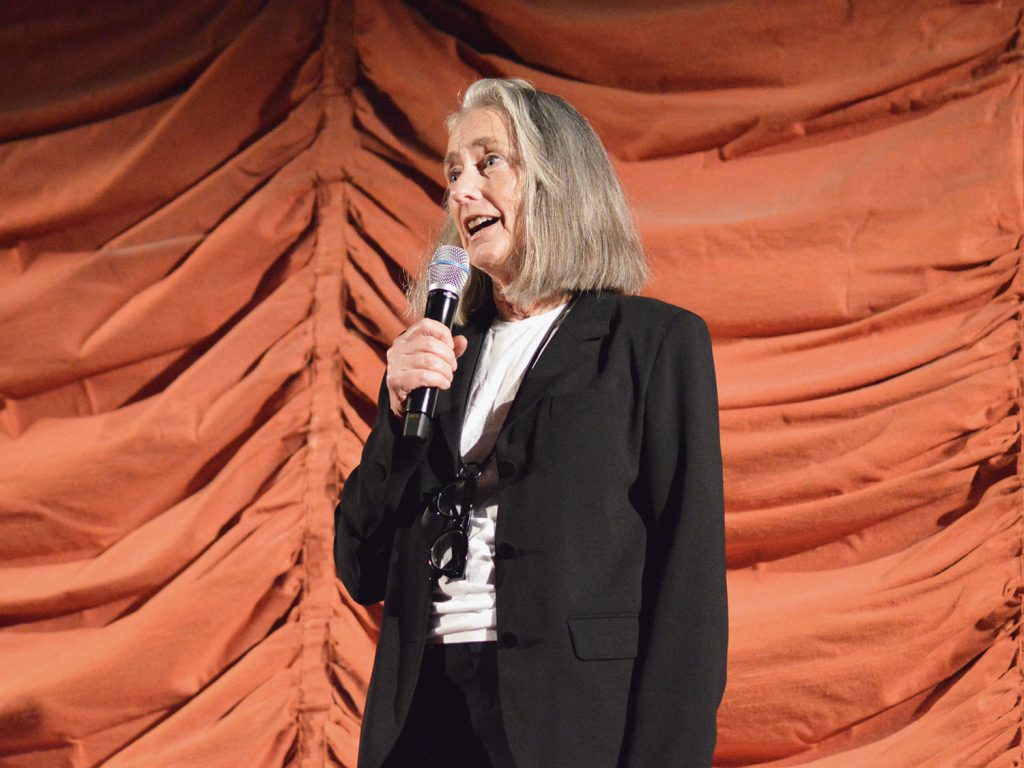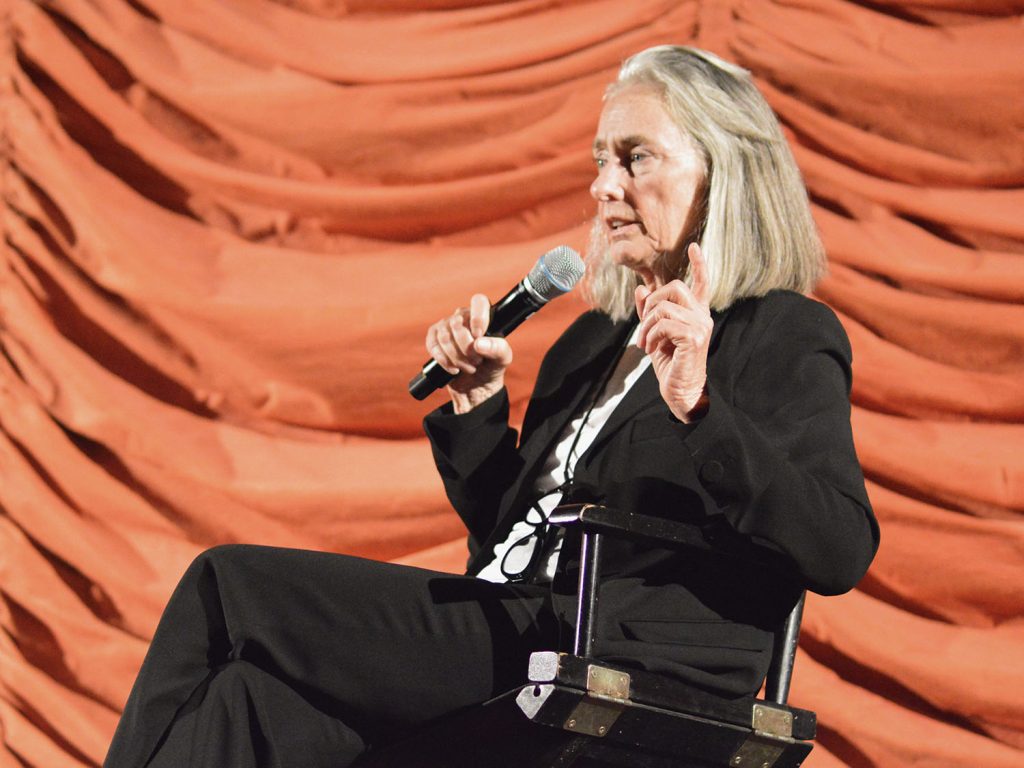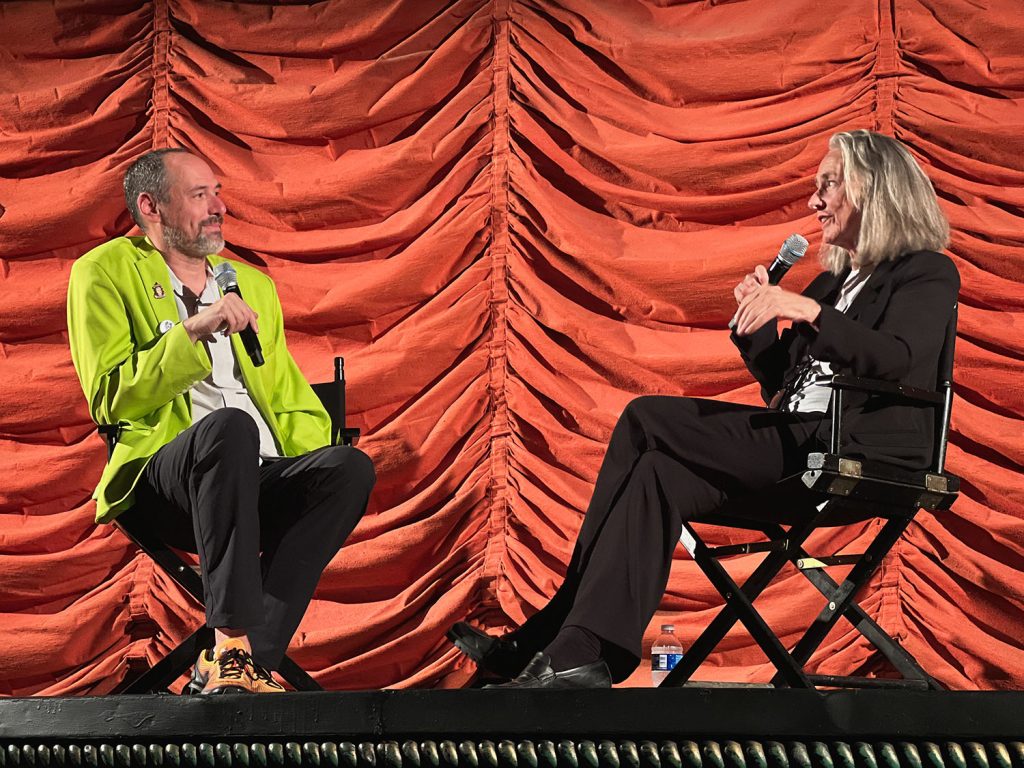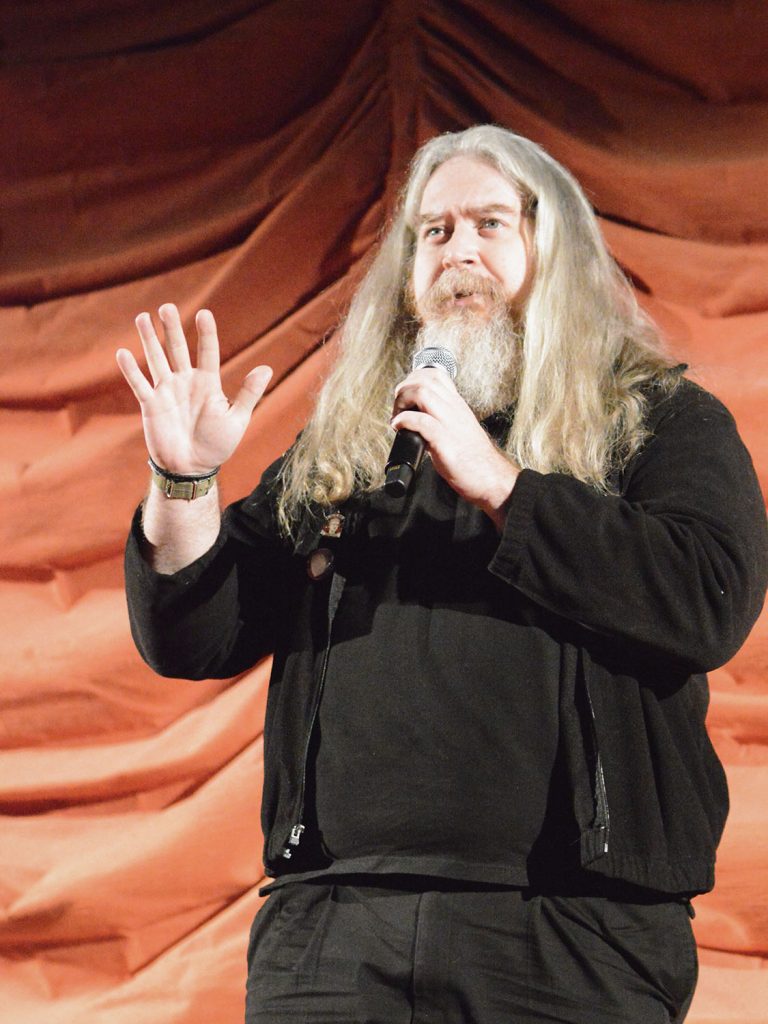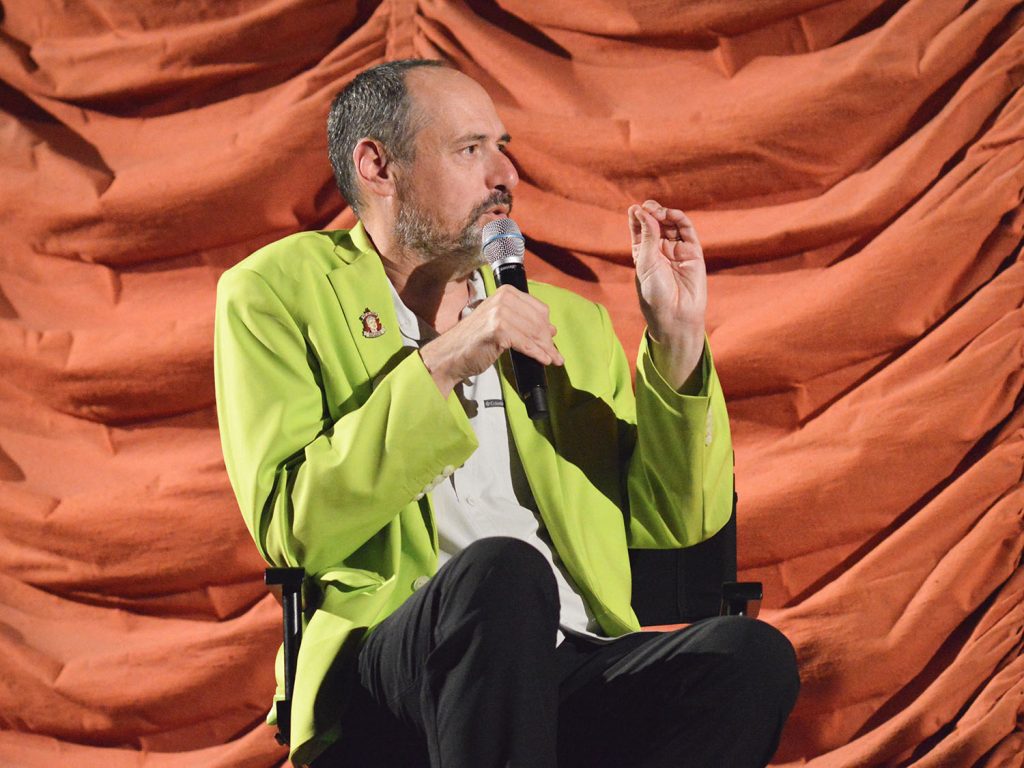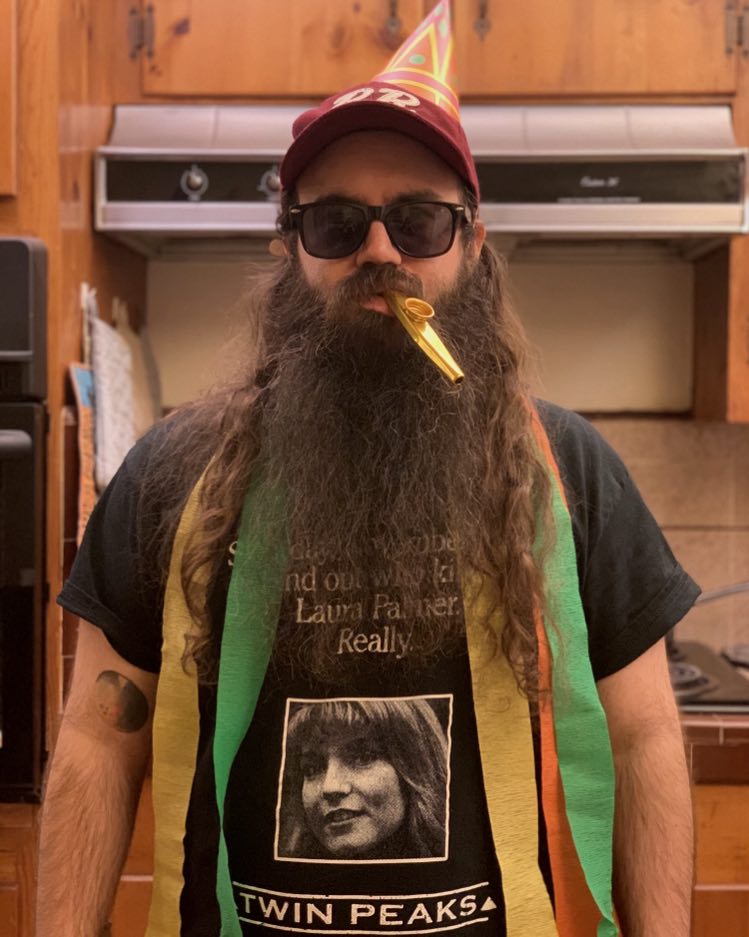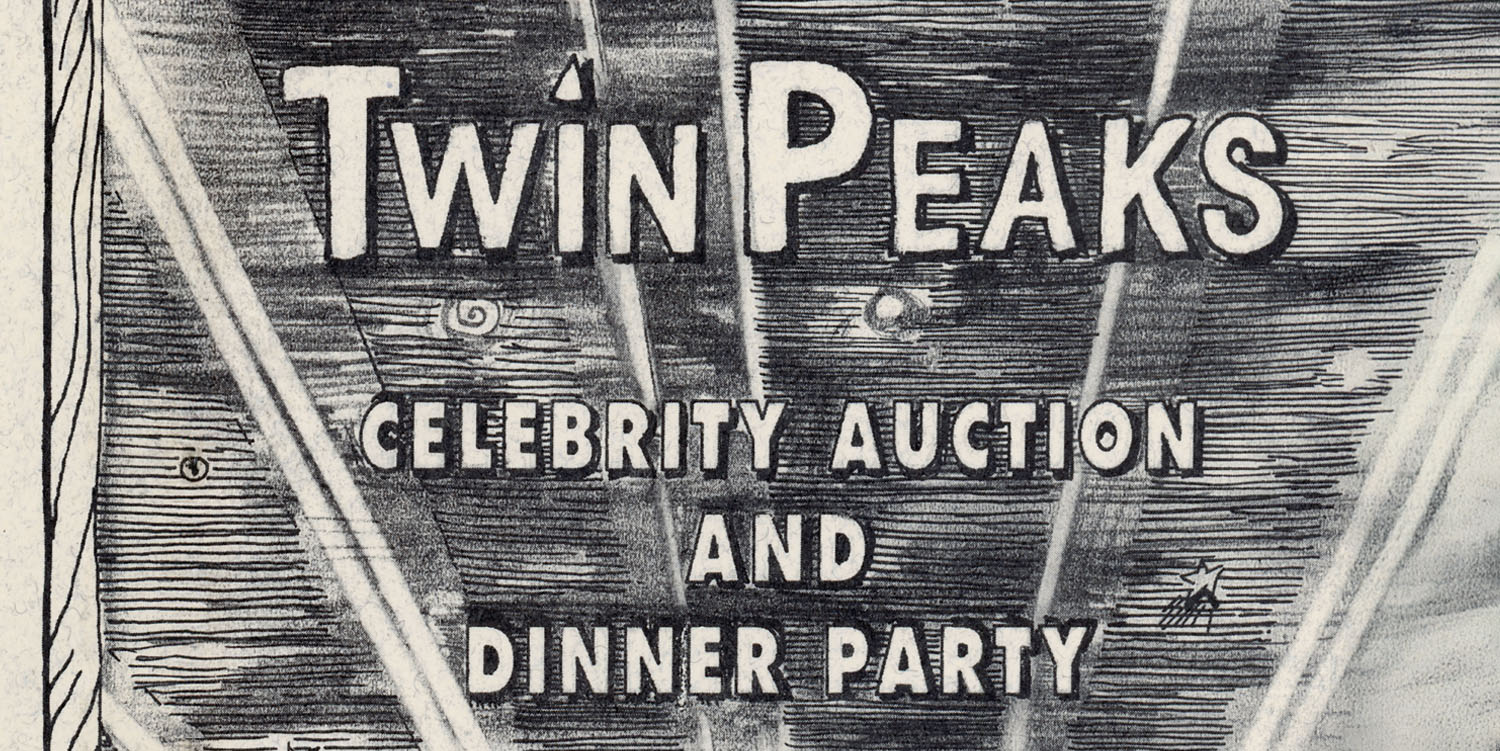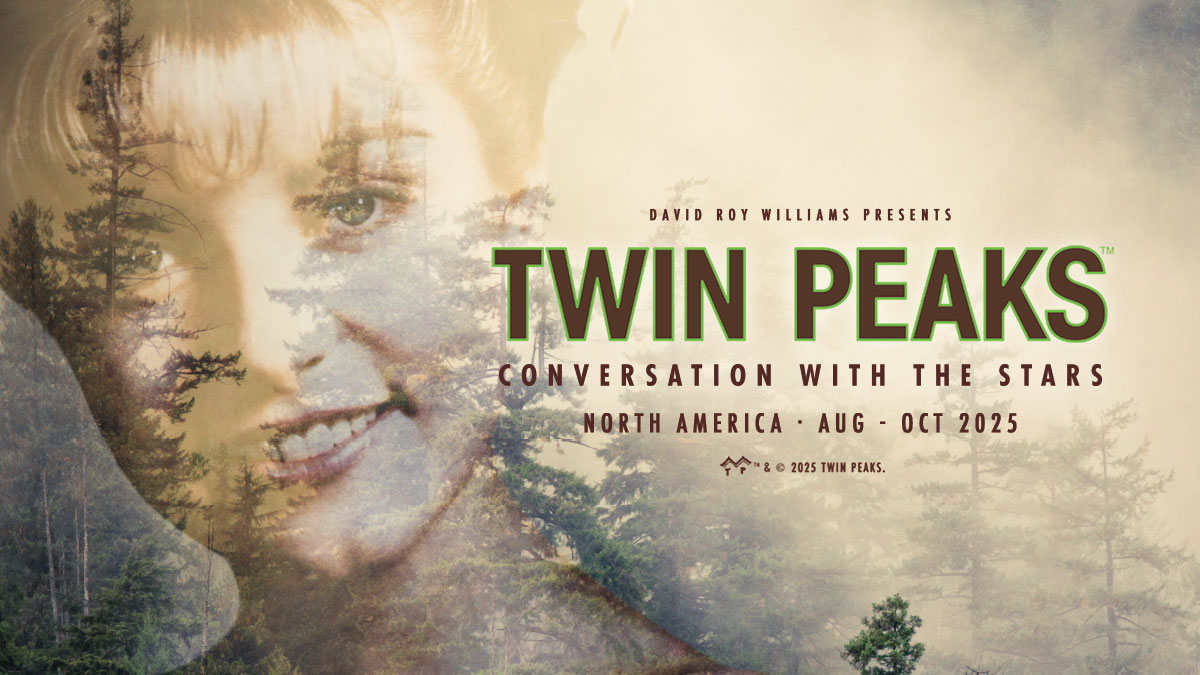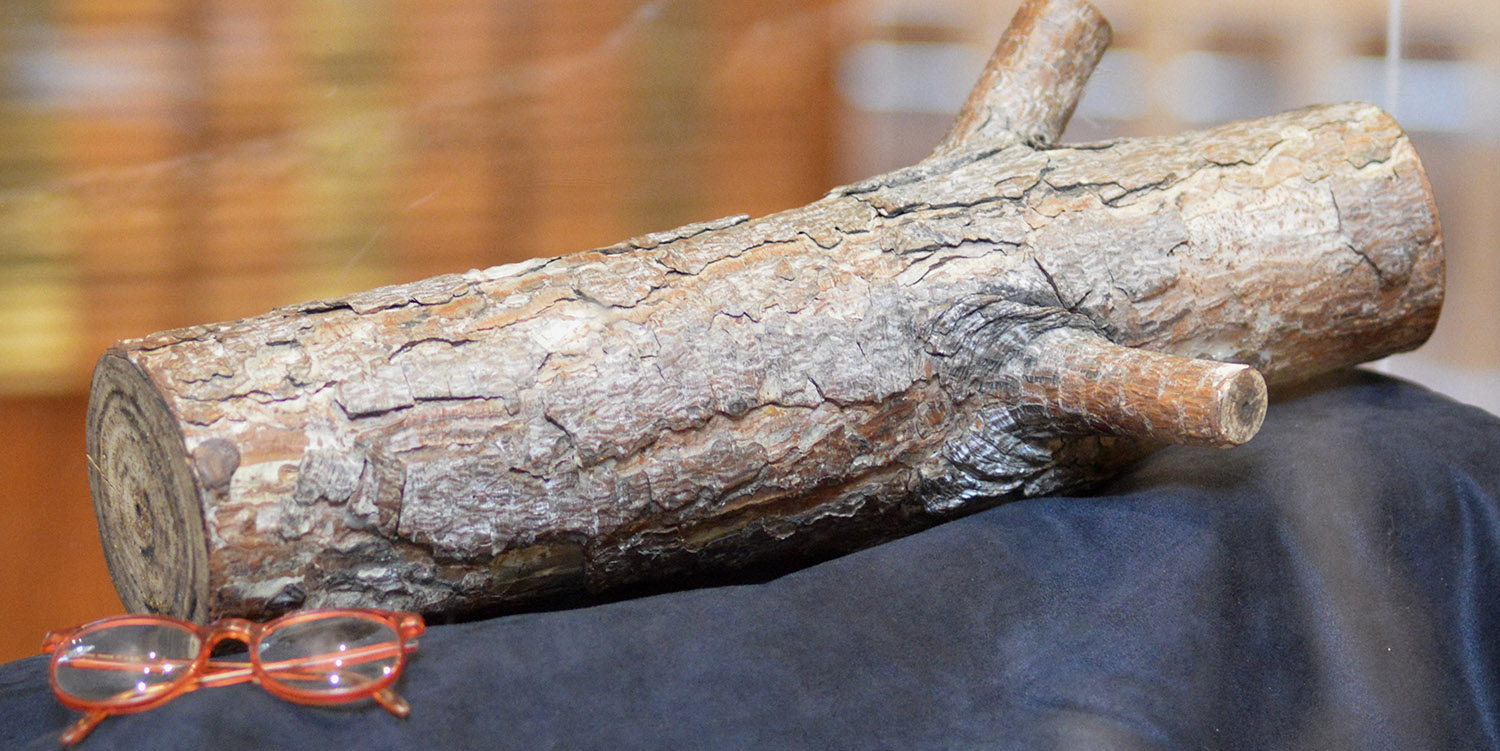In the wake of David Lynch’s passing, events have popped up all over the world to celebrate this singular artist’s life and legacy. Perhaps none have been more thorough than the Music Box Theatre’s “David Lynch: Moving Through Time” series in Chicago, Illinois.
DAVID LYNCH: MOVING THROUGH TIME
The 10-day retrospective was curated by former Music Box projectionist Daniel Knox and ran from April 11-20, 2025. Each screening included pre-show programming comprised Lynch short rarities and many also featured post-film Q&As conducted by The Blue Rose Magazine’s Scott Ryan.
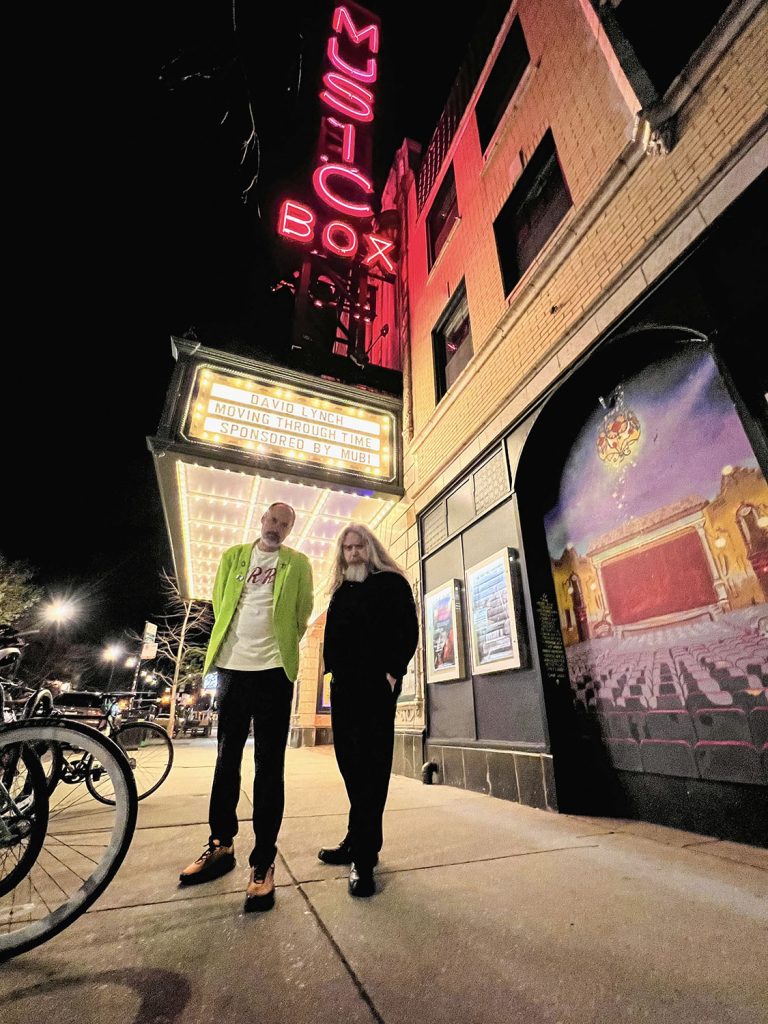
With a stacked schedule of films, special guests, and secret screenings going late into the night at this stunning and historic theater, it was difficult to accept that I couldn’t attend the entire event and had to settle for only three days. This article will detail what I saw during my whirlwind visit from April 16-18.
DAVID’S DECOR
I arrived in Chicago on the evening of April 16 and hurried to the Music Box. Upon my arrival, I found the theater’s lounge and lobby thoroughly decorated with Lynch-themed artwork. Behind the concession stand, there was a Lumberton-style picket fence and a collection of familiar characters painted by Michael Burton (known as @thecheapsoap on Instagram).
Beneath this piece was the “Moving Through Time” event poster designed by Sean Longmore which was available for purchase. If you missed getting this 18-inch by 24-inch, The Music Box Theatre is offering remaining posters for sale via their website.
This art was also featured on the front of the program.
Above the ticket booth, there was a papier-mâché Big Boy that appeared to be walking on hot coals. This may seem like a deep cut to some, but the Bob’s Big Boy restaurant in Burbank was Lynch’s favorite lunch spot. For years, he would visit daily at 2:30 p.m. for coffee and a chocolate milkshake.
Now, this one truly is a deep cut. Several Woody Woodpecker dolls were sewn to the couch in the lounge area in reference to Lynch’s 1981 “rescue” of five Woody Woodpecker dolls from the side of the road. He named them Chucko, Buster, Pete, Bob, and Dan.
They stayed with Lynch at his office for years, but things apparently took a turn, and he eventually confessed, “They are not in my life anymore.”
The lounge was also adorned with logs and taxidermy (which thankfully did not fall down) and tube televisions played Lynch’s work on VHS tapes.
Most impressive was the detailed Red Room photo op, complete with a World’s Fair Saturn lamp and screen accurate brown and cream colored chevron floor, courtesy of @inside_a_dream_mke. Considering I spent much of this trip behind the camera, I’m grateful to have been yanked into a group photo with friends both old and new.
I arranged to display some of my screen-used Twin Peaks props in a glass case in the lounge for the days I was able to attend. I made sure to bring a few from Lynch-helmed episodes, like one of the red rubber balls from The Great Northern in episode 2.007 and Dell Mibbler’s magnifying glass from episode 2.022.
FROM THE HEAD WITH GEORGE GRIFFITH
After setting up the prop display, I settled in for a 35mm screening of From the Head (2011) – directed and written by George Griffith, who also plays the lead role. While this is not exactly a Lynch film, the beauty of Daniel Knox’s curation is the inclusion of adjacent works. Twin Peaks fans will recognize George as the actor who plays Ray Monroe in the show’s third season, but in the Q&A after the film, George revealed that David Lynch is partially responsible for his movie coming to fruition long before he joined the Peaks cast.
George interviewed David about transcendental meditation for a radio show back in 2009. At a lunch after the interview, he mentioned his plan to make a movie about his real experience working as a bathroom attendant in a New York strip club.
“I said that I had written a feature – I was making a feature, and the entire thing took place in the bathroom. And I remember he said, ‘Great!’ I was, like, so happy because no one had reacted that way to the pitch ever, and I was just really inspired. It was like nitrous fuel. And I said to him, ‘Can I send it to you when I finish?’ And he said, ‘You bet!’”
“I mean, I left that and I was like, ‘I’m gonna make this fucker!’ And, you know, I finished it and the first thing I did with the cut was send it to him.”
DAVID LYNCH’S HOTEL ROOM
When the ticketed events ended, the unlisted free showings began. Keeping the theme of films that take place in only one location, this night’s secret screenings included the first and third episodes of Hotel Room (1993), written by Barry Gifford and directed by David Lynch. Each episode of this short-lived HBO anthology is set in room 603 of the Railroad Hotel in New York City at different points in time.
Considering Hotel Room has been neglected since the VHS era and has become quite hard to find, it was an absolute delight to see this on the big screen.
RED ROCK WEST
The next day started with Red Rock West (dir. John Dahl, 1993) – another Lynch-adjacent release starring Nicolas Cage, Lara Flynn Boyle, and Dennis Hopper. In this western neo-noir, Nicolas Cage plays an ex-marine looking for work who is mistaken for a hired assassin. He plays along long enough to collect the money, fall in love with the target (Lara Flynn Boyle), and anger the real assassin (Dennis Hopper). This was a wild ride with an incredible cross section of Lynch actors, and it was fun to see on 35mm.
MY LAST MARTINI WITH WENDY ROBIE AND ROB CHRISTOPHER
Next up was a new short titled My Last Martini (2025) based on a story by David Lynch’s frequent writing partner Barry Gifford and starring Twin Peaks’ Wendy Robie. She was in attendance for a Q&A after the screening along with the writer/director Rob Christopher.
In the film, a mysterious woman named Anna (Wendy Robie) offers an intriguing tale of family history to a stranger at the bar (Mickey O’Sullivan). Wendy’s experience keeping the Twin Peaks mystery alive came in handy during Scott Ryan’s interview as she stopped short of interpreting her character’s motivation for the audience.
“We had to take such liberties with the piece in order to shoot it simply because if you’ve read the short story, Barry Gifford’s short story ‘My Last Martini,’ the character that I was playing, Anna, is much younger,” Wendy said. “She’s completely different, so you have to have completely different reasons for everything. I mean, it’s so filled with mystery anyway. Who is this woman? Who is she, and this story- is it really about her grandmother? That’s all I’ll say.”
When Scott Ryan asked Rob Christopher what made him want to adapt this story, Rob said, “For those of you who have already seen ‘Wild at Heart,’ you know that Barry Gifford writes some of the best dialogue in the world. And when you see it on the page, there’s this craving to have an actor perform it because it’s just so magical.”
Of course Scott couldn’t let Wendy off the hook without a few Twin Peaks stories. She talked about how physically demanding it was to play super-human Nadine Hurley in the second season, saying, “It was like this energetic 18-year old would commandeer my body in the morning and do all these things and then hand it back to me at the end of the day.”
She singled out episode 2.015 as being particularly rough but rewarding.
“There was one day when I had to burst through a door, and I brought the door with me. It was a trick with the hinges, but they didn’t make the door any lighter! I had this bruise from my hip to my ankle…Diane Keaton directed that episode and she’s wonderful, and she said, ‘Alright, actress picks!’ I got to pick the take that would be used, so I picked the one where I came through and it smashed me. I picked that one because I wanted it to be immortalized.”
DAVID LYNCH’S WILD AT HEART
Immediately following this interview was David Lynch’s Palme d’Or winner, Wild at Heart (1990), also based on a story by Barry Gifford. Though I’ve seen this movie a million times, this was my first time in a theater setting.
I was sad to miss editor Duwayne Dunham and director of photography Fred Elmes at some other screenings at the Music Box earlier in the week, but their interviews were thankfully recorded for the Blue Rose Magazine’s YouTube channel. Even with no cast or crew from this film present at this screening, it was met with a raucous round of applause as the credits rolled.
TWIN PEAKS: FIRE WALK WITH ME
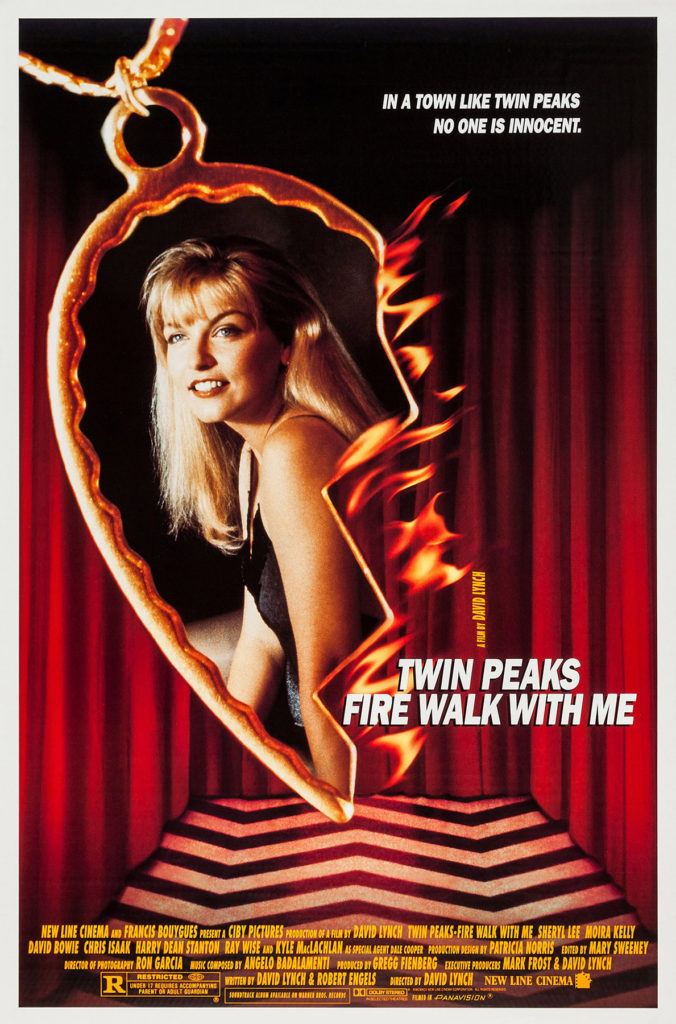
The last official screening of the day was David Lynch’s Twin Peaks: Fire Walk With Me (1992). The reappraisal of this film came up frequently throughout the retrospective, and the sold out crowd at this showing was a testament to its place as the centerpiece to the Twin Peaks oeuvre.
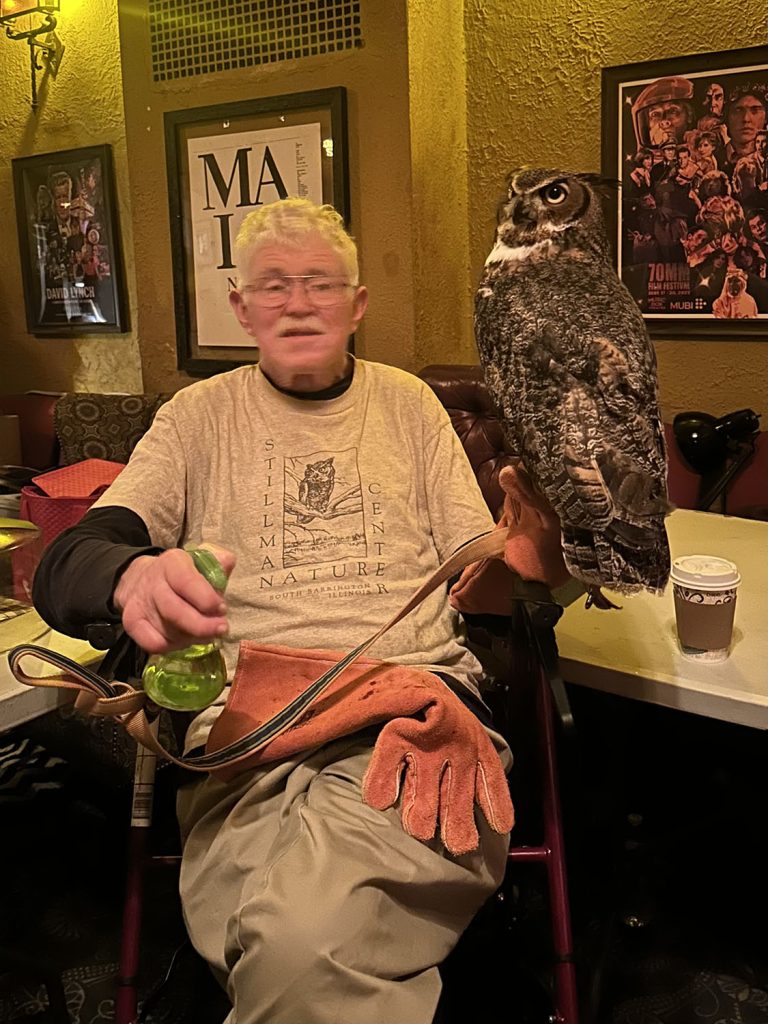
This screening had an unusual guest on hand: a live great horned owl from the Stillman Nature Center in South Barrington, Illinois. The owl and its handler sat in the lobby greeting fans.
Another Twin Peaks staple was represented in the form of delicious pie courtesy of Hoosier Mama Pie Company. Cherry and key lime were available by the slice, and the table even had punch cards for regular customers to return for a free slice after purchasing six. No word on whether anyone made it to slice number seven before the night was over.
GOTTA LIGHT? WITH GEORGE GRIFFITH
It’s no surprise that the vast majority of the sold out crowd stayed after Twin Peaks: Fire Walk With Me for the bonus screenings that followed, as the inclusion of Part 8 of Twin Peaks’ third season was a loosely kept secret. This unforgettable episode starts with Ray Monroe and Mr. C driving away from the prison, and George Griffith was present to introduce it.
George told a story about a cold night in the Santa Monica Mountains filming a scene for this episode when he was huddled around a portable heater with Kyle MacLachlan and David Lynch.
“On the set, they’ll bring you, like, a Scooby Snack every now and then. They came over and they were like, ‘Do you guys want something?’ and we were all like, ‘Yeah.’ And it was, like, these little cups of soup.
We all had them and they were steaming, and David took a spoonful and just went, ‘Wow!’ I didn’t even know what happened.
He said, ‘What is that?!’
And Kyle said, ‘I think that’s broccoli cheese soup, boss.’
And he said, ‘Wow!’
And I just remember thinking, I just want any part of my experience to be like that. It was amazing to witness. But it was also a great example of this real childish component to his presence, you know? It felt very creative to be around and inspiring.”
Following Twin Peaks Part 8 was an unofficial documentary about the making of Twin Peaks: Fire Walk With Me and its premiere at the 1992 Cannes Film Festival, titled “World of Blue.”
An anonymous Twin Peaks archivist compiled rare interview footage of Pamela Gidley, Frances Bay, Walter Olkiewicz and more, as well as new footage from Peaks historians, like fellow Blog author Steven Miller, Travis Black and Brad Dukes, to provide additional context. With no plans to distribute the film, the archivist described it as a “love letter to David Lynch and the cast and crew of Fire Walk With Me.” It was a wonderful treat and I’m grateful to them for sharing it.
THE MISSING PIECES
The evening ended with a showing of Twin Peaks: Fire Walk With Me’s deleted scenes, compiled and released in 2014’s Twin Peaks: The Entire Mystery box set as a feature length bonus titled The Missing Pieces. I wish this had a proper theatrical run upon its release, and judging by the crowd still present at the Music Box past 1:00 a.m., I’m not the only one.
DAVID LYNCH: THE ART LIFE
I eased into my final day in Chicago with an early afternoon screening of David Lynch: The Art Life (2016). This documentary is comprised of interviews with Lynch about his upbringing and early life as an artist, featuring many archival photos as well as footage of him working on his mixed media fine art. The pacing of this film is soothing, like a day in the studio with my favorite artist. This showing was sparsely attended, but there was a long day ahead.
SUNSET BOULEVARD WITH MARY SWEENEY
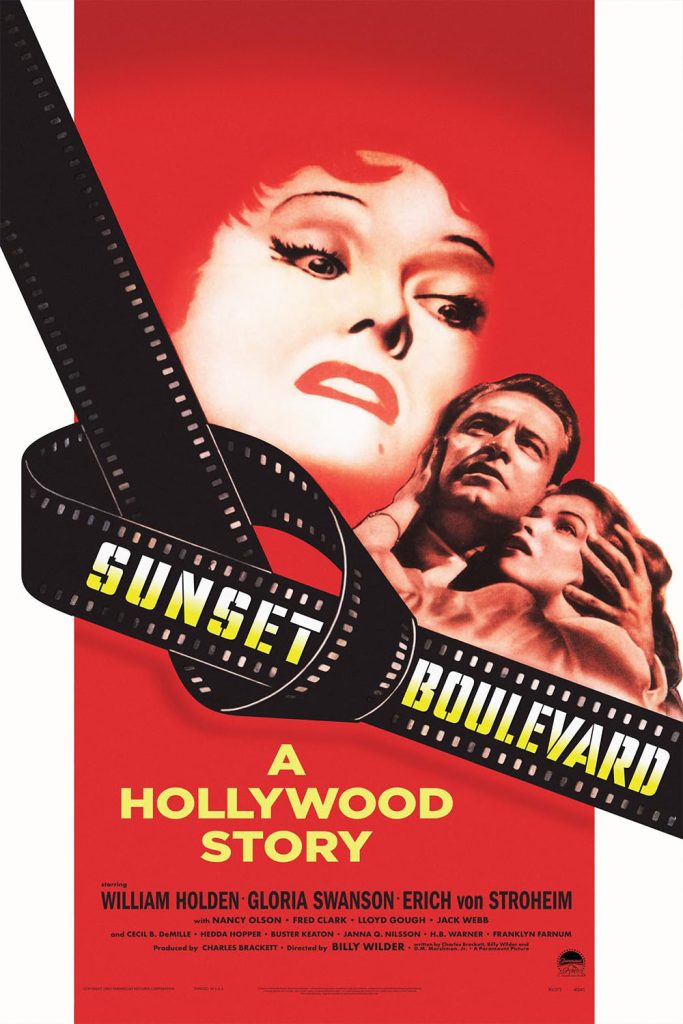
One of the titles I was most excited to see on the schedule was Sunset Boulevard (dir. Billy Wilder, 1950), partially because Lynch’s work is chock full of references to this film, but also because it would be introduced by Lynch’s longtime editor and producer, Mary Sweeney.
I was so pleased to speak with Mary for a moment in the lobby before the theater filled up and I couldn’t resist taking a photo with her in front of the archway. As Mary said in her introduction, Sunset Boulevard was hugely influential to the films that would eventually be known as Lynch’s Los Angeles trilogy – Lost Highway, Mulholland Drive, and Inland Empire – all of which Mary worked on as either editor, producer, or both.
MULHOLLAND DRIVE WITH MARY SWEENEY
Series curator Daniel Knox brilliantly scheduled Sunset Boulevard as a double feature with Lynch’s masterpiece Mulholland Drive. The film would again be introduced by Mary Sweeney, and this time she would also participate in a Q&A afterward. This was the deciding factor in my traveling to Chicago for this event, and it was the first screening to sell out after tickets went on sale.
Mary spoke of Mulholland Drive’s journey from pilot to feature in the midst of the whirlwind success of The Straight Story, saying, “I had just delivered the cut of ‘Straight Story’ late ‘98 to turn it over to sound…and January of ‘99 we started shooting the pilot. So we shot the pilot and then we were mixing ‘Straight Story,’ and we were taking ‘Straight Story’ to Cannes in May…And we were in the house literally getting ready, our bags packed and everything to get in the car to go to Cannes and we got the call that they hated it. Hated it. And you know, off we went.”
After The Straight Story rode the wave of award nominations, French producer Pierre Edelman asked what happened with the shelved Mulholland Drive pilot and kickstarted the pivot to a feature film with StudioCanal.
“David wrote new pages to add to it to change it to a feature…You have to lose the open ending that’s built into all these separate stories that then will go on to other episodes. David wrote these new pages and we did reshoots for just a couple weeks I think, and I had the pages to follow and then there were lots of things to be lifted out.
So it was this sort of changing, rejiggering the puzzle…When you have one script and you’ve shot it and everything, you’re always moving scenes around and taking scenes out. You try them in many different places and they just don’t work. You don’t want to lose them, but you don’t want to keep anything in the movie that doesn’t work. So it’s very similar to that process.”
I was so happy that Scott Ryan made time to ask Mary about how she ended up editing episode 2.007 of ‘Twin Peaks,’ featuring the stunning reveal of Laura Palmer’s killer.
“I was an assistant editor on ‘Blue Velvet’ and ‘Wild at Heart,’ and then on the second season of ‘Twin Peaks’ I was hired as a swing editor. So there were three main editors who were cutting in 35mm at the speed of television turnaround, and each of the three of them would throw me scenes – very elementary scenes and then two person dialogue scenes and things like that – and I’d cut them and they’d give me notes, and it was this fantastic tutorial where this was this first time I had ever cut anything. So I did that just for the second season, and then Duwayne Dunham who had cut the first two [episodes] was directing now on ‘Twin Peaks.’ So he was not available to cut that episode that David was directing…And so I felt completely confident to go ahead and cut that.”
To close out the interview, Scott asked Mary about David Lynch’s legacy. “The response to David passing was so incredibly full of love, and it’s staggering,” she said.
Mary went on to describe the young film students she teaches at USC, saying, “They’re all totally aware, very avid fans, and I just think that happens with every generation. It’s just kind of incredible how he made these [films] in a way – and I call it interactive – that he made them in a way that you do get to come up with your own version of ‘Mulholland Drive’ and what the blue box is. And that’s really something that can just go on.”
AN EVENT TO REMEMBER
And with that, my short but sweet sampling of the David Lynch: Moving Through Time retrospective came to an end. I only experienced a fraction of the joy that Daniel Knox and Scott Ryan brought to fans over the course of ten days, but it was enough to remind me why this body of work is so special. David Lynch’s legacy is a ripple of creativity, mindfulness, and community.
Thank you to Daniel, Scott, the Music Box staff, and sponsor Mubi for bringing this event to fruition.
Discover more from TWIN PEAKS BLOG
Subscribe to get the latest posts sent to your email.

